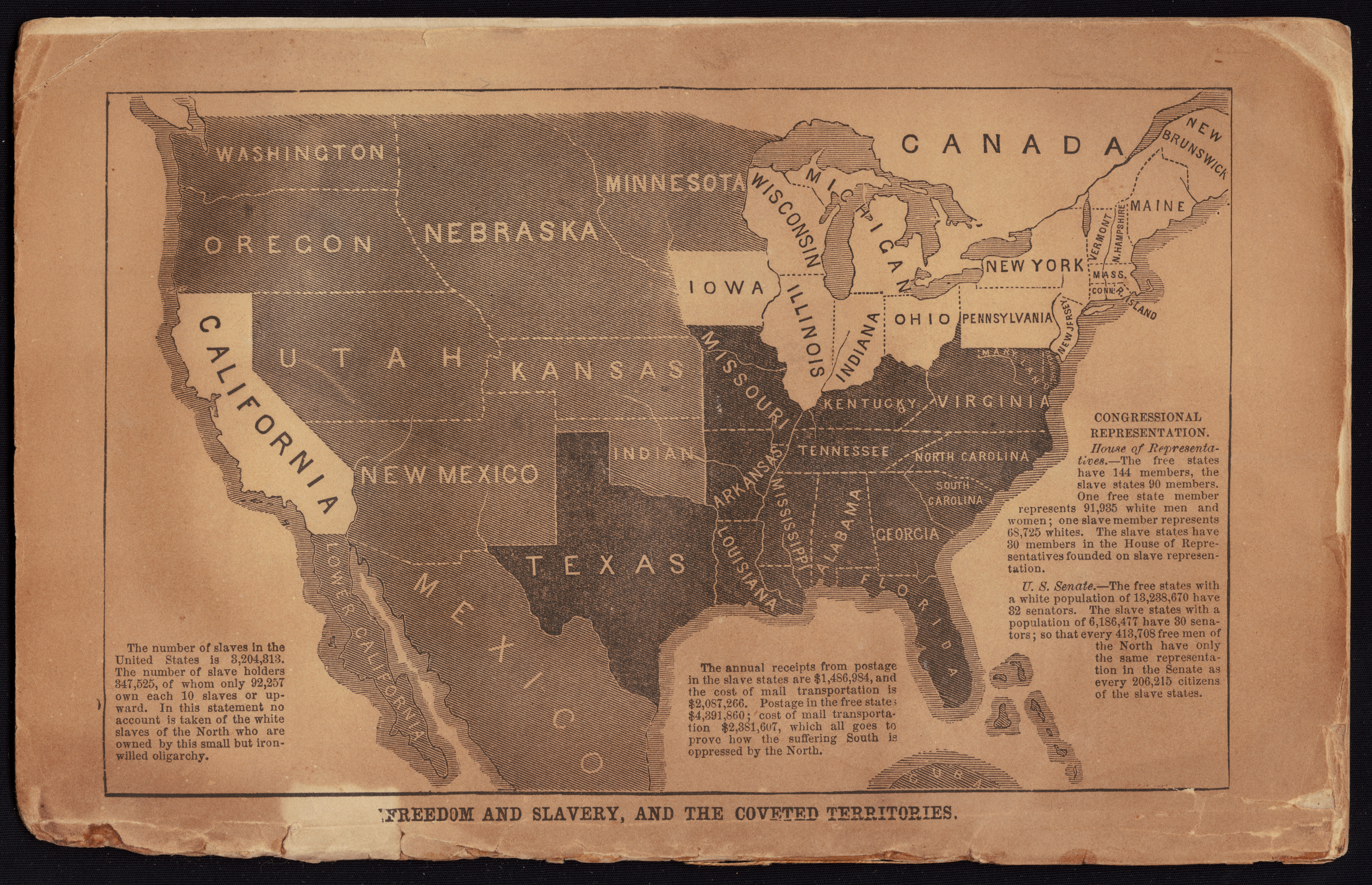This text is part of the Teaching Hard History Text Library and aligns with Key Concept 2.
FREEDOM AND SLAVERY, AND THE COVETED TERRITORIES
CONGRESSIONAL REPRESENTATION.
House of Representatives.—The free states have 144 members, the slave states 90 members. One free state member represents 91,985 white men and women; one slave member represents 68,725 whites. The slave states have 80 members in the House of Representatives founded on slave representation.
U.S. Senate.—The free states with a white population of 13, 288,670 have 32 senators. The slave states with a population of 6,186,477 have 30 senators; so that every 413,708 free men of the North have only the same representation in the Senate as every 206,215 citizens of the slave states.
The annual receipts from postage in the slave states are $1,486,284, and the cost of mail transportation is $2,087,266. Postage in the free states $4,891,860; cost of mail transportation $2,881,607, which all goes to prove how the suffering South is oppressed by the North.
The number of slaves in the United States is 3,204,813. The number of slave holders 347,205, of whom only 21,257 own each 10 slaves or upward. In this statement no account is taken of the white slaves of the North who are owned by this small but [illegible] oligarchy.


0 COMMENTS